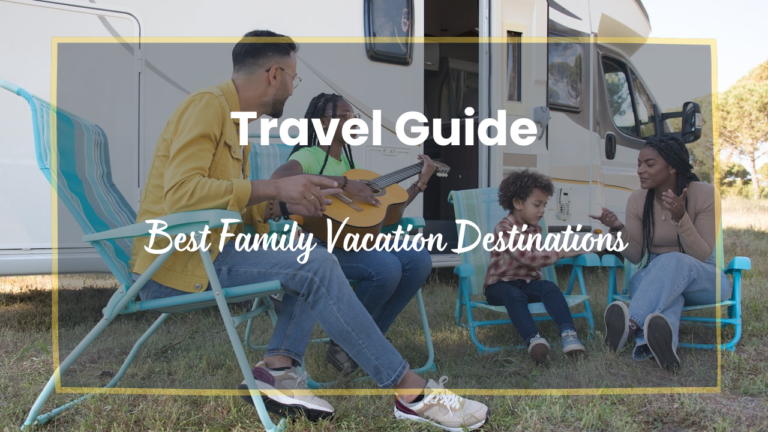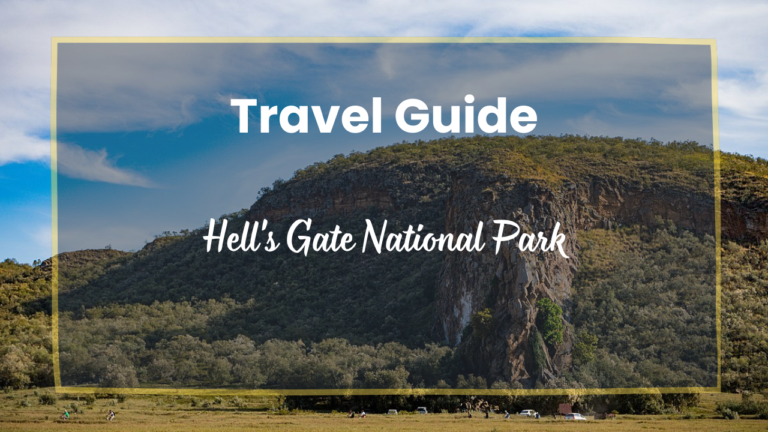Smart Guide to Long-Term Travel Planning
 Long-term travel planning is both an art and a science. If you want to travel the world, whether it’s as a digital nomad or a gap-year dreamer, careful planning will make the difference between a stressful and life-changing experience.
Long-term travel planning is both an art and a science. If you want to travel the world, whether it’s as a digital nomad or a gap-year dreamer, careful planning will make the difference between a stressful and life-changing experience.
This detailed guide will walk you through each step, from setting your travel goals to managing finances, packing wisely, and preparing yourself emotionally. Long-term travel is a great way to enrich your life, be sustainable, and affordable.
Why Long-Term Travel Planning Matters
Traveling long-term isn’t a vacation. It’s an entirely new way of life. Every choice is more important when you don’t have a fixed itinerary or round-trip ticket. Proper planning ensures:
- Travel sustainably within your means
- You can adapt your goals or circumstances to change.
- Reduce the stress of road travel by reducing logistical issues.
- You can create a journey that is meaningful, intentional, and in line with your values.
Define Your Long-Term Travel Purpose

Before diving into logistics, it is important to understand your “why”. This will help you make all other decisions.
You Should Ask Yourself:
- What am I hoping to gain from this trip? What do I want to get out of this trip?
- What is my preferred pace? Fast, slow, or somewhere in between?
- Can I live on my savings or work remotely?
Your purpose will influence your destination, budget, packing lists, and mindset.
Select Your Destinations Smartly

Planning your long-term trips by putting down every destination is tempting, but this is rarely feasible. Think in terms of phases, regions, or “travel clusters,” which will allow you to travel more efficiently and with greater cost efficiency. Here are some ways to narrow down your choices:
1. Cost of Living
The affordability of long-term travel can make or ruin it. Prioritize areas where you can stretch your budget further, without compromising the experience.
- Budget-Friendly Regions:
- Southeast Asia: Vietnam, Thailand, Indonesia
- Eastern Europe: Georgia, Bulgaria, Albania
- Latin America: Mexico. Colombia. Guatemala
- Africa: Morocco, Kenya, Egypt, South Africa
Tips: Calculate your monthly costs using cost-of-living calculators such as NomadList or Numbeo.
2. Visa Requirements
Each country has its own entry regulations, and overstaying can have expensive or risky legal consequences.
- Research Essentials:
- Duration of visa-free or visa on arrival
- Extending your visa to nearby countries or “visa-run” countries
- Work permits or Digital Nomad Visas are required for certain countries (e.g., Portugal, Estonia, Costa Rica).
Bonus: Get to know travel zones such as the Schengen Area in Europe or ASEAN countries, which allow for multi-country travel under a single visa.
3. Weather and Seasonality
When traveling during the wrong season, you may encounter closed roads, hazardous conditions, or costly surprises.
Avoid:
-
- Monsoons (May to October) in Southeast Asia
- Typhoon Season in the Pacific (June to November)
- Winters can be harsh in the north if you are not prepared.
Prefer:
-
- The shoulder seasons (spring or fall) offer better weather and lower prices
- Dry season for trekking or safaris
Research the climate for your travel dates using sites such as WeatherSpark.
4. Personal Interests and Travel Style
Your interests should be the guiding force. When you travel with passion, it will be more enjoyable.
- Do you love history? You can visit Greece, Peru, or Egypt.
- Into food? Explore Italy, Vietnam, or Mexico.
- Nature is what you need. New Zealand, Patagonia, or Kenya are great places to visit if you want nature.
- Do you prefer urban living? Dive into Tokyo, Berlin, or Buenos Aires.
Experiences are more important than places when planning your itinerary.
Budgeting for Long-Term Travel

You need to create a sustainable financial plan to travel longer and more efficiently.
1. Estimate Monthly Costs
Divide your budget into realistic daily and weekly categories.
- Accommodation (hostels, Airbnbs, co-living spaces)
- Food (eating out or grocery shopping)
- Transportation (flights and buses, trains, scooter rental)
- Activities (tours and excursions, entrance fees, etc.)
- Travel Insurance is a must-have
- Connectivity (local SIMs, coworking, subscriptions
Tip: Budget between $1,200 and $2,000 monthly for modest long-term trips in most regions.
2. Create an Emergency Fund
Unexpected expenses, such as a last-minute flight, theft, or medical issues, can wipe out your budget.
- Save up to 2-3 months’ expenses in an emergency account.
- Always have a second credit card on hand in case of an emergency.
3. Track Your Spending
The daily tracking helps to build awareness and prevent surprises.
- Use apps such as:
- Trail Wallet for iOS
- TravelSpend for iOS/Android
- Mint or YNAB is a better option for broader financial management.
4. Find Income While Abroad
You can travel for longer by earning a little extra money.
- Freelancing (writing, design, virtual assistance)
- Remote jobs are available on sites such as We Work Remotely and FlexJobs
- Seasonal work (teach English or bartend)
- Content creation (blogging, vlogging, photography–takes time to monetize)
Find remote-friendly offices and cafes by using co-working directories.
Plan Logistically—But Stay Flexible

Structure is useful, but rigidity kills spontaneity.
1. Book the First Few Weeks Only
Plan your essentials for the initial 1-2 weeks.
- Flights
- Accommodation
- Pick up SIM cards or an airport transfer.
You can acclimate and find your rhythm.
2. Use Tools to Simplify Your Journey
Keep it simple and organized:
- Google My Maps or the Notion app: for visual trip mapping
- Skyscanner / Hopper: Track flight deals
- Rome2Rio: Multi-modal transportation planner
- TripIt: Centralized management of itinerary
3. Leave Room for Detours
Accept unexpected invitations, local festivals, and cheap flights.
Flexible planning allows for memorable moments.
Smart Packing for Long-Term Travel

Pack smartly and light.
Essentials:
- A backpack or a suitcase is best (40- 50L for maximum mobility).
- Clothing Layers (Lightweight, Breathable, and Multi-purpose)
- Solid toiletries
- Walking shoes + sandals
- Travel documents (both printed and digital copies)
- Power banks, travel adapters, lightweight laptops, or tablets
Pack a daypack and laundry detergent sheets to go on a quick trip.
Staying Healthy and Safe Abroad

1. Get Travel Insurance You Can Rely On
Must include:
- Medical coverage (injury, illness)
- Theft and damage to electronic equipment, luggage
- Trip cancellations or delays
2. Vaccines & Prescriptions
- Consult a travel clinic at least 4-6 weeks prior to departure
- Prescriptions and travel letters are available for border crossings.
3. Monitor Safety Conditions
- Save emergency contacts
- Join local safety groups via Facebook or Reddit.
- If you are a U.S. Citizen, use the Smart Traveler Enrollment Programme (STEP).
Staying Connected on the Road
- eSIMs (e.g., Airalo and Holafly), global SIM providers
- Cloud storage: Google Drive and Dropbox for backups
- Secure logins with NordVPN and ExpressVPN, even on public Wi-Fi
- WhatsApp and Telegram are the best messaging apps for family chats, local contacts, and chats with friends.
Preparing Mentally and Emotionally
- Join travel networks Nomad List, Workaway, and Couchsurfing.
- Create routines such as morning walks, journaling, and cooking days.
- Regular check-ins with family and mentors are important for emotional grounding.
- Practice mindfulness: Discomfort = growth. Accept the learning curve.
Bonus Tips for Long-Term Travel Success

- One month at one place can be more rewarding than five weeks in five places.
- Duolingo and Drops are great apps to learn the language of your destination.
- Give yourself time to reflect, rest, or just get lost.
- Document your journey. A blog, private journal, or vlog will become invaluable over time.
Final Thoughts
Traveling long-term is not about escaping from life but about living it to the fullest. By planning, being flexible, and following your instincts, you can create a trip that will expand your horizons, change your perspective on the world, and help you grow.
This guide will help you travel confidently, sustainably, and joyfully, whether for a few months or many years.
FAQs
What is long-term traveling?
Long-term travel is not defined precisely. Some say it means traveling for more than three or six months, while others say it means traveling for one or two years. Long-term travel can be a form of freedom for us, mentally and physically.
How to sustain long-term travel?
Plan regular downtime breaks into your schedule to recharge and rest. Avoid feeling overstimulated by constant movement. Spend the day relaxing, taking a stroll, or doing nothing. Prioritize sleep: Maintain a regular sleep schedule to ensure adequate rest.
What can you do to prepare for a long trip?
Cash is always handy. Get a magnetic key holder for storing a spare under the vehicle. The day before your trip, drink plenty of water and avoid alcohol or drugs. Also, sleep well and get enough rest. It is important to plan upbeat music and a hands-free cellular device. The most important thing is to stop if you are feeling groggy or fatigued. Stop! Stop!
What are the 5 Ps of tourism planning?
The marketing mix consists of five elements: product, price, location, promotion, and people. Three factors are required for a successful tourism product: the tourist attractions, facilities, and services, and their physical accessibility.
How do I budget for long-term travel?
Track your spending using apps and estimate your monthly costs. If you need to, look for passive or work income options.







